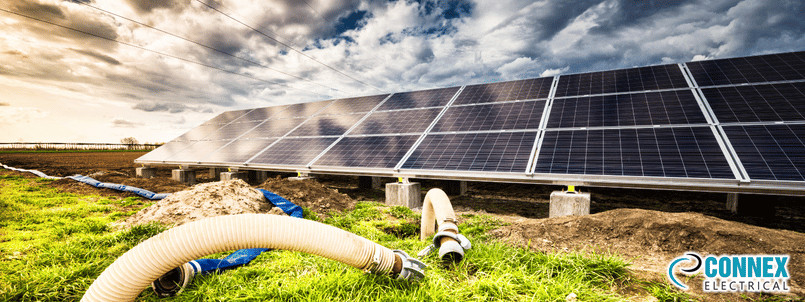Harnessing solar energy has revolutionized how we power our homes, helping us save on electricity costs and reduce our environmental footprint. Solar panels offer a clean, renewable source of energy, but how do they work? Let’s break down the 6 key steps that show how solar panels convert sunlight into electricity for your home.
What Are Solar Panels?
Solar panels are designed to capture sunlight and convert it into electricity using the photovoltaic effect. Each panel is made up of solar cells, often silicon-based, which absorb sunlight and create an electric current to power your home.
The Photovoltaic Effect Explained
When sunlight hits a solar cell, it triggers a physical reaction. Light particles, or photons, energize the electrons in the cell’s silicon material, creating an electric current. This process lies at the heart of solar energy generation.
6 Steps To Know How Solar Panels Convert Sunlight Into Power
Step 1: Sunlight Activation
Solar panels contain photovoltaic (PV) cells that capture sunlight. When these cells absorb photons, their energy initiates the process of generating electricity. The PV cell’s semiconductor layer, usually made of silicon, plays a crucial role in capturing sunlight effectively.
Step 2: Generating Electricity
As photons energize the silicon atoms in the cell, electrons are knocked free, creating an electric current. The design of the PV cell directs these free-flowing electrons into a circuit, forming a current that can be harnessed as electricity.
Step 3: Converting DC to AC
The current generated by the panels is direct current (DC), but homes use alternating current (AC). Here, an inverter converts DC into AC, ensuring compatibility with the home’s electrical system and optimizing voltage for efficiency.
Step 4: Power Distribution
Once converted, the electricity flows into your home’s electrical panel, distributing power to appliances and outlets. Modern systems also connect to smart grids, allowing real-time energy management for greater efficiency.
Step 5: Storing or Selling Excess Power
Unused solar energy can be stored in batteries for nighttime use or low-sunlight days. Alternatively, through net metering, excess electricity can be sent to the grid, allowing homeowners to earn credits, reducing overall energy costs.
Step 6: Monitoring and Optimization
Advanced monitoring systems track solar energy production and usage, alerting users to any performance issues. Monitoring maximizes system efficiency, ensuring long-term benefits and optimal return on investment.
Why Install Solar Panels?
There are several reasons to install solar panels, but we’ll focus on the most common one here.
- Cost Savings: Generate most of your home’s electricity and lower your energy bills.
- Eco-Friendly: Reduce carbon emissions and reliance on fossil fuels.
- Increased Property Value: Homes with solar installations are more attractive to eco-conscious buyers.
- Low Maintenance: Solar systems generally require only minimal upkeep.
- Energy Independence: Decrease reliance on local utility companies and protect against rising energy prices.
Common Misconceptions About Solar Panel
Many people have concerns about solar panel efficiency, cost, and space needs. Here’s a quick look at some of the most common misconceptions:
- Weather Dependency
Solar panels still work on cloudy days by capturing indirect sunlight, though with lower efficiency. - High Initial Costs
While the initial cost may seem high, rebates and tax credits often help offset expenses, making solar more affordable. - Space Requirements
Solar installations need adequate space, but flexible panel designs now allow installation in smaller areas.
Conclusion
Solar technology not only powers your home but also provides a clean, renewable energy source that can greatly lower electric bills and boost energy independence. With advancements making solar more affordable and accessible, there’s never been a better time to go solar.
Switching to solar is a smart, sustainable investment that can cut energy costs and increase your home’s value. Ready to explore solar solutions? Contact Connex Electrical for a solar setup tailored to your needs and take the first step towards a greener future.

